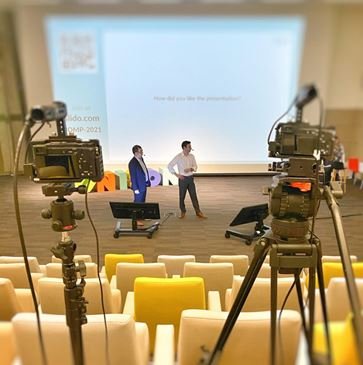The first step in understanding how to create effective multimedia content is knowing your audience. Before you start, ask yourself: Who is this content for? Different audiences prefer different types of media. For example, younger audiences may enjoy short videos, while professionals might prefer infographics or slideshows.
Knowing your audience helps you choose the right format and style for your content. This way, you can deliver a message that resonates with them and meets their needs.

Choose the Right Tools
Choosing the right tools is essential when learning how to create effective multimedia content. Whether you’re creating videos, podcasts, or graphics, there are many user-friendly tools available. Tools like Canva for graphics, Adobe Spark for videos, or Audacity for audio recordings can help you create professional-quality content.
Make sure to choose tools that match your skill level and needs. Easy-to-use tools can save time and make the process of content creation more enjoyable.
Focus on Quality, Not Quantity
When thinking about how to create effective multimedia content, it’s important to focus on quality over quantity. Instead of producing a large amount of content, take time to make each piece valuable. High-quality multimedia content grabs attention and keeps viewers engaged.
For example, a well-edited video with clear sound and strong visuals will have a greater impact than a poorly made one, even if the information is the same.
Tell a Story
Storytelling is a powerful tool in how to create effective multimedia content. People connect with stories more than just facts or statistics. Whether you’re creating a video, podcast, or infographic, try to tell a compelling story.
This could be a customer’s journey, a behind-the-scenes look at your business, or an explanation of how your product solves a problem. A good story makes your content memorable and helps build a connection with your audience.
Use a Mix of Media
To keep your audience interested, it’s a good idea to use a mix of media formats. For example, combine text with videos, infographics, and sound. This is a key point when considering how to create effective multimedia content.
Using different types of media in one piece of content can engage more senses, making it more interesting for your audience. The right balance of text, audio, and visuals ensures your message is clear and keeps viewers engaged.
Keep It Simple
When figuring out how to create effective multimedia content, simplicity is key. Overloading your content with too many effects, text, or sounds can confuse your audience. Make sure your message is clear and easy to follow.
For example, if you’re creating a video, keep the visuals clean, and make sure the audio is clear. Don’t add too many distracting elements that take away from the main message.
Conclusion
Now you know how to create effective multimedia content. Start by understanding your audience, choose the right tools, focus on quality, tell a story, mix media formats, and always keep it simple. With these tips, you can create content that engages and connects with your audience.











